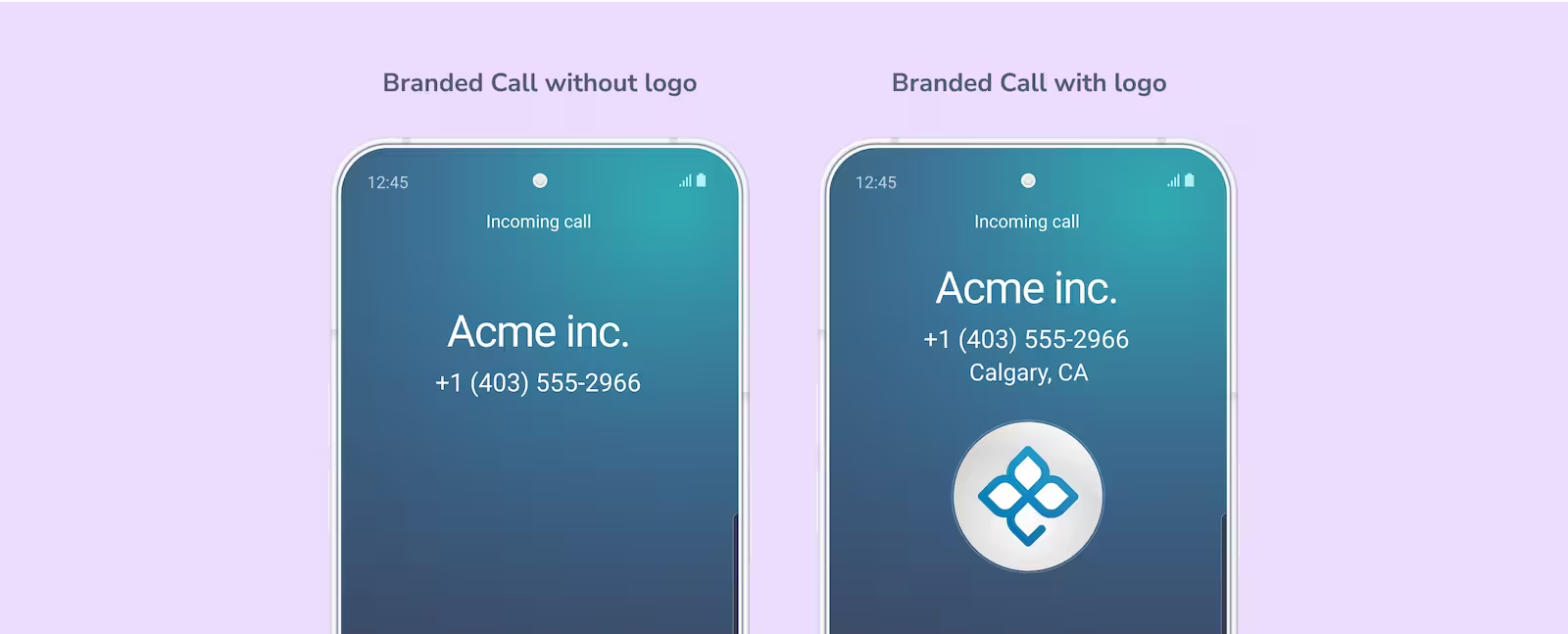Understanding customer-friendly calls and reputation
Maintaining the integrity of business calls is essential in today’s communication landscape. With the global rise in phone scams and fraud, consumers have become increasingly wary of unidentified calls. Regulators, networks, and device manufacturers have responded by stepping up their efforts against invasive phone calls. This includes implementing consumer protections such as call labelling.
In this landscape, it’s increasingly important for businesses to ensure their calls are customer-friendly — respecting both consumer preferences and applicable laws. Your customers want to hear from you; despite the prevalence of voice fraud and scams, phone calls remain the preferred communication method for most businesses and customers. By following customer-friendly calling practices, you can establish yourself as a trusted caller, improving engagement with those customers while proactively preventing reputation pitfalls along the way.
What is a customer-friendly call?
Calls are considered customer-friendly when they respect consumer preferences and laws.
What are call warning labels?
When it comes to call reputation, many businesses are understandably concerned about call warning labels. Call labels serve as a first line of defense for consumers, helping them to identify suspicious calls. There are two primary types of call labels that users may see:
- Suspected scam / Likely fraud / Potential fraud: Calls flagged as potential scams based on verifiable data and patterns recognized by networks.
- Likely spam / Likely nuisance / Suspected spam: Calls identified as suspicious. They have received complaints from end-users (such as being reported as “spam”) or look very similar to others that have.
The myth of “mislabelling”
The term “mislabelling” is sometimes used to describe legitimate callers that get labelled as spam. However, even legitimate callers can sometimes make calls that aren’t customer-friendly — even if unintentional. In that case, spam labelling is not a mistake but rather a signal that the customer experience can be improved.
How is call reputation determined?
How do networks discern which calls might be deceptive or unwelcome? They use spam analytics systems that incorporate data modeling and AI to detect calls that are likely to pose a risk to consumers. These systems are dynamic, analyzing not just the phone number but a variety of factors surrounding the entire context of a call. This can include:
- Who is calling: The caller’s identity is paramount to finding suspicious calls. Recognized organizations with transparent information about their identities are less likely to be seen as suspicious — because scammers typically don’t like to provide that level of transparency. Conversely, unknown or suspicious entities may find their calls being flagged. Enterprises should consider registering their numbers because it provides a level of transparency with networks that not only makes them more trusted but also helps networks spot the bad actors.
- What is known about enterprise phone numbers: The history and data linked to an enterprise’s phone number provide valuable insights. Numbers with a history of fraudulent reports are generally more likely to be labelled as such in future calls.
- What their calls look like: What patterns do your calls typically exhibit? High volumes of calls to a wide array of unrelated numbers, especially if done in a short time frame, can signal invasive or aggressive behavior. Conversely, consistent calls to a specific group suggest legitimate business or personal interactions.
- How recipients respond to these calls: The reactions of call recipients are crucial. A pattern of negative responses, such as call blocking or spam reporting, can lead to future calls from that caller being labelled as spam or nuisance. However, positive interactions like consistently answered calls can contribute to a favorable call reputation.

Navigating this terrain is challenging for businesses like yours. However, ensuring your customers pick up your calls doesn’t need to be an insurmountable hurdle. Despite the influx of scam calls, consumers continue to favor phone calls as their preferred mode of communication across all sectors. By integrating the following best practices for customer-friendly phone calls, you can prevent potential reputation pitfalls and generate better consumer experiences that positively impact your calling reputation. This guide is designed to help you do just that.
How to stop being reported as spam
For enterprises, reputation issues can be frustrating and detrimental to the success of your business. When calls get reported as spam by the consumers who receive them, that’s an indication that they’re not customer-friendly. Following these tips can help you make customer-friendly phone calls that don’t result in user complaints.
1. Register your business numbers
Phone number registration is the first step that every business should take to protect the integrity of their call reputation. When you register your business, you establish yourself as a legitimate caller to the networks that deliver calls. Scammers often avoid revealing their identities, but by registering, you establish your organization as a credible entity.
Phone number registration is your right as a business, and should always be free. Hiya Connect Number Registration is a free product that enables businesses to register their numbers across global networks where spam calls are labelled.
While registration is an important first step that establishes you as a legitimate caller, it is still essential to maintain customer-friendly calling practices to promote a positive reputation.
2. Avoid excessive repeated calls to the same contact
Excessive and repetitive calls to the same contact can make your company appear unprofessional and bothersome, leading to a negative perception of your enterprise and potentially leading to more of your calls being blocked or reported by recipients. To maintain a positive experience, maintain a structured call schedule that respects the recipient’s time and availability.
There isn’t a magic number of calls per day to hit before worrying about spam labels, but ask yourself this: “Would I get annoyed if I was called in this manner?” If the answer is yes, it’s time to rethink your strategy. Use CCaaS (Contact Center as a Service) or call tracking software to track interaction history and avoid unnecessary call repetition.
3. Minimize early call terminations by call recipients
Ensure recipients remain engaged by training your agents to promptly introduce themselves, state the reason for calling, and articulate its value immediately as the call is connected. Proper training in respectful communication and customer engagement can significantly reduce early hang-ups. Transparency and clarity in the introduction can help mitigate suspicions and foster a positive connection.
4. Adjust dialer practices to eliminate pauses
The correct call software settings are crucial in preventing impersonal experiences and reducing abandoned calls. If the recipient experiences a significant pause or finds no one on the line upon answering, they’re more likely to hang up, leading to a higher rate of call abandonment. Ensure your dialer settings are optimized to minimize delay between pickup and engagement from an agent, thereby reducing the likelihood of recipients quickly terminating your calls.

5. Respect local contact hours
Be considerate of your contacts’ time by avoiding calls at unreasonable hours. Intrusive calls during early mornings or late nights can tarnish your company’s image. Different countries and regions have their own rules and regulatory bodies that define acceptable calling times. While a typical range for telemarketing calls might be between 8 am and 9 pm, verifying the specific regulations for your region is crucial. By ensuring compliance with local guidelines, you respect the recipient’s time and uphold a positive perception of your business across all global markets.
6. Use high-integrity contact lead lists
For outbound prospecting efforts, prioritize using high-quality, well-curated lead lists from reputable sources. Ensure the leads are gathered ethically and accurately reflect individuals who have shown genuine interest in your services or products. This approach not only respects the preferences of potential customers but also enhances the effectiveness of your calls. By focusing on interested parties, you can engage in more meaningful and productive interactions, maintaining a positive call reputation and improving the likelihood of successful outcomes.
7. Honor your recipient’s communication preferences, spoken or unspoken
Respecting a recipient’s communication preferences is crucial for maintaining trust and a positive reputation. If a recipient indicates verbally or through their actions that they are not interested in continuing discussions about your product or service, honor this as a clear signal to cease communications. Understand that a hang-up or a lack of engagement is often an unspoken way of saying “not interested.” It’s important to recognize these cues and act accordingly, even if the recipient doesn’t explicitly request removal from your call list. Implement a system that efficiently tracks and respects these preferences, ensuring your future communications are directed only towards those who are receptive, thus avoiding frustration and adverse reports.
8. Cultivate positive and consistent interactions
The demeanor of your agents during calls can significantly influence the recipient’s perception of your company. Unprofessional behavior on calls can lead to recipients blocking or reporting your calls, tarnishing your company’s reputation. Implement strict guidelines for professional conduct, provide comprehensive training for agents, and monitor calls regularly to ensure high standards of professionalism. How to stop being reported as spam In addition, a call represents more than a single interaction. It’s a stepping stone to establishing a rapport with the recipient.
Poorly managed calls can obstruct a critical relationship-building process. To ensure more successful calls, agents should employ effective communication skills, active listening, empathy, and problem solving tailored to each recipient’s unique needs. Further, fostering even short-term interactions, such as leaving a thoughtful voicemail or sending a LinkedIn message, can strengthen the connection and reduce the risk of being perceived as spam. This approach supports a healthy, ongoing communication relationship, building a positive image for your enterprise.
9. Pursue leads within a reasonable timeframe
Complementing the principle of not calling too frequently, do not extend your sales outreach over an excessively long period. Persistently contacting a potential lead for over six months without making any progress can significantly increase the risk of being reported as spam. Over time, recipients may forget the reason for the initial call, leading to a disconnect in perceived consent. It’s crucial to track engagement drop-off rates from the first contact and establish a sensible timeframe for discontinuing attempts. This approach helps prevent recipient frustration and spam reports.
10. Add branded caller ID to your calls
Once you’ve covered the basics, consider adding a branded caller ID solution such as Hiya Connect Branded Call. Branded caller ID allows businesses to customize and control their outbound caller ID to display a company name, logo and call reason, making calls to mobile phones instantly recognizable to call recipients and creating a more professional experience.
When customers and prospective customers see a business name instead of an unknown number, they are more likely to pick up and trust the call.
The value of branded calling
With Hiya Connect Branded Call, businesses can instill trust in their voice calls by providing identity and context from the first ring. Branded caller ID, call feedback and insights, and branded call performance analytics offer everything you need to boost answer rates and improve the bottom line.

What Hiya Connect Branded Call can do for you:
- Increase contact rates with a branded call display: Hiya’s Branded Call allows businesses to customize and control their outbound caller ID with their company name, logo and call reason to display on call recipients’ screens, creating instant brand recognition and increasing the likelihood of a live connection.
- Stop being treated like spam by your customers: With Hiya, you can see real feedback from users reporting your calls as spam. This information can help you dig deeper into your number reputation, in order to investigate and resolve issues impacting it.
- Access vital call performance analytics: Access a full suite of customizable analytics to optimize call delivery, performance, and reputation that businesses can use to show the impact of call identity on KPIs. This lets companies easily measure the impact their branded calls are having on driving sales and higher customer satisfaction.
Want to learn more about how Hiya Connect can help you increase connection rates and turn more calls into live conversations? Start with a free call inspection to see what your customers and prospects see when you call.














